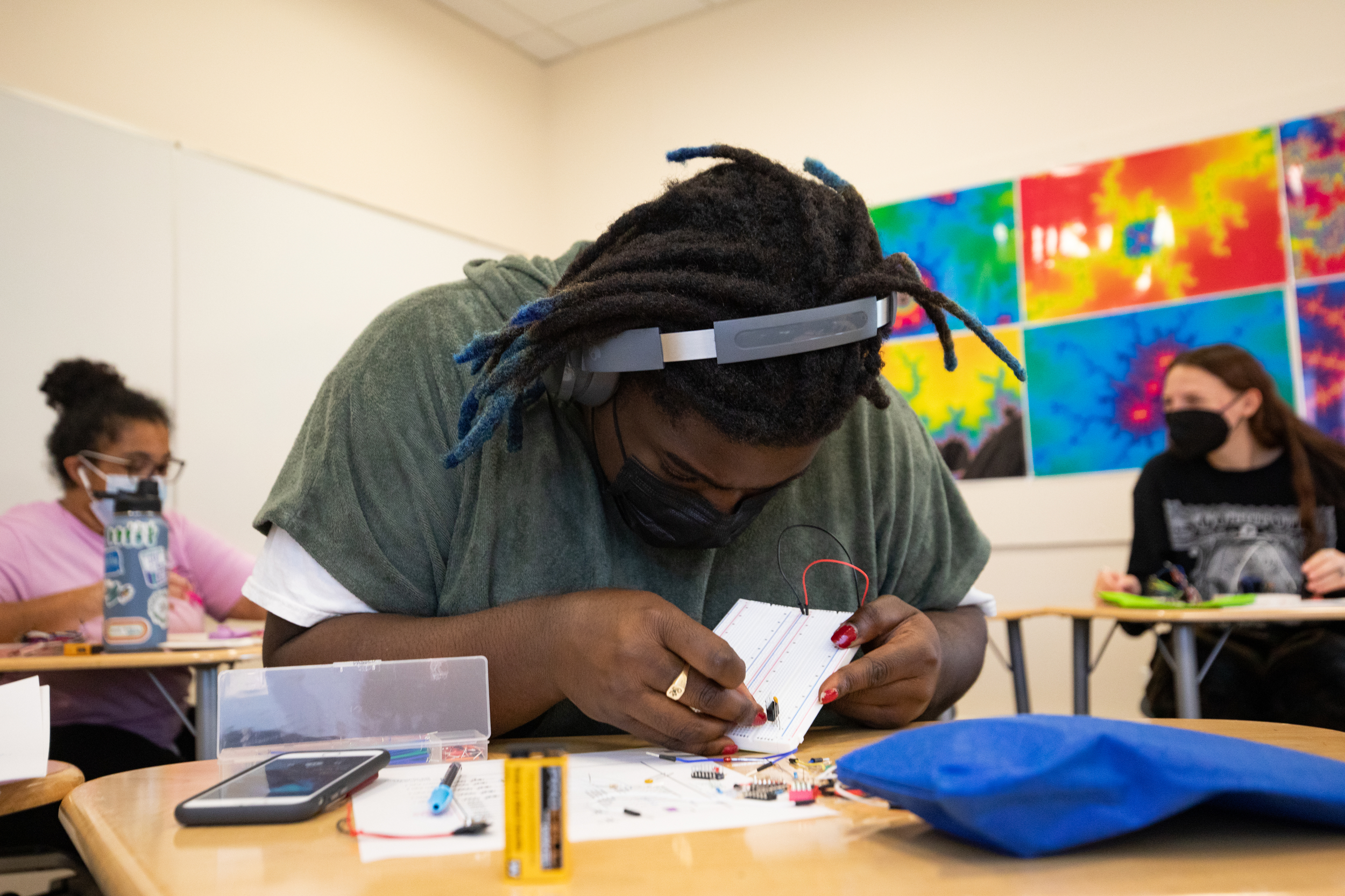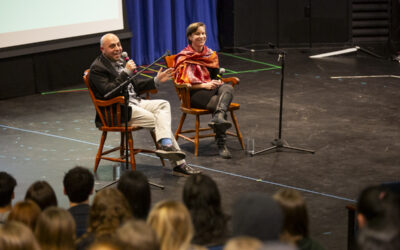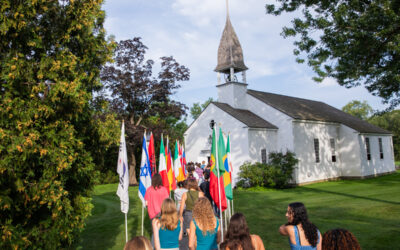
When designing the new course Discrete Mathematics, George Larivee wanted to cover topics outside the scope of the existing math curriculum at CA. He asked himself what both he and students would be interested in, and electronics quickly came to mind. He decided that this topic would kick off his course focused on applied mathematics.
Students started the semester learning about physical science components of electricity, including separation of charges, flow of electricity, and storing charges. The class then moved on to building circuits using resistors, capacitors, and transistors, which allow one circuit to control another. Equipped with this knowledge, students were ready to build their own calculators.
With Larivee’s guidance, students constructed simple electric calculators, which were able to perform addition. Larivee says students in the course could “explain every bit” of how their calculators work. The project was no small task: Each calculator required around 90 wires, placed precisely and in the right order, to function properly. When students completed their working calculators, Larivee says, “they got a tremendous rush from it.” Watching students build these calculators and really understand how they work firsthand has been his favorite part of the course so far.
Later in the semester, Larivee plans to cover cryptography and cryptocurrency. The unit will begin with studying basic cyphers and then explore the mathematics involved in encrypting confidential information. Students will learn the difference between “perfect secrecy,” in which it is mathematically impossible to know what a code is hiding, and “computational security,” in which a mathematical algorithm encodes data in a way that is difficult for people to break the code. The course will also look at mathematical modeling that explores the way real-world events might play out, such as evolution, the colliding of two galaxies, or the spread of disease.
With what Larivee calls a “hodgepodge” of topics covered, students in his course have many opportunities to connect with the material and apply it in a variety of ways. For example, the simple calculators students built model how electricity can perform mathematics, and computers use this same technology to do math. Larivee explains that with this knowledge of electricity and mathematics it is possible to create a working calculator in the video game Minecraft.
Larivee says that as the course continues, he looks forward to continuing to teach students about the “mind-blowing” applications of math and hopes to illustrate for them “the power, the beauty, and the complexity” of many different areas of mathematics.


